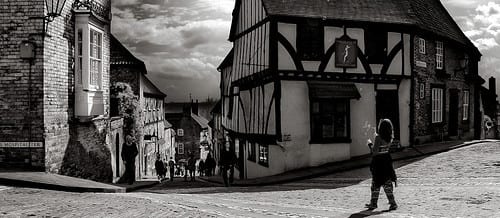“Imagine a winter landscape. Your senses working overtime: you shiver and squint, stamp and blow. Only then perhaps do you look, listen, touch. You flog through the snow your feet and fingers freeze. You are aware of surface, climate and ambience” – (Pearson, 2010, 29)
The inevitable happened; it rained, meaning devastatingly we only had 2 participants on our tour. But all was not lost – the audio was our main piece of work which was of course unaltered by the weather, but the overall experience I feel was hindered by it. Instances such as the handing out of drinks, I feel would have worked better on a drier day as would the beginning and the end on the picnic blanket. However, hopefully the participants that came were aware of ‘surface, climate and ambience’ which is all we hoped for really – for them to observe what was around them while accompanied by our audio.
Amazingly enough, there were a few orchestrated serendipities we were not responsible for (some of them we were!) there was a ‘pilgrim food service’ van, a Robin at the statue whilst the cradle song was playing and an actual man walking a dog near the Tennyson statue.
The most disappointing thing about not having any fresh eyes (and ears) to our piece was not being able to collate feedback, we were excited to ask people of their opinions in a hope that in the future could perhaps take this further providing it was successful. I believe an honest amount of constructive criticism would have been very helpful for our plans to perhaps expand our tour further. However, we did have one person try and test our piece in an earlier dress run and we were able to collect feedback from him. However, this feedback was of a different kind, it was more how we could improve for our performance day as oppose to looking upon our audio as a finished product. However, our spirits will not be dampened, if we were to do this again I would suggest perhaps on different times over a week period as you would hope it would be unlikely that the weather could affect the performance all week. This, I believe would offer our tour a different dimension; people could pick times that suited them which may inspire more people to participate. Another idea is instead of it being a one off, people could download it and do it whenever. This would be different from our original idea as there would be no orchestrated serendipity’s, shells along the way and no one to greet you or say goodbye, however, this would be something to consider when considering taking our idea further.
I have documented some of the day on my flickr which can be found here: https://www.flickr.com/photos/130413370@N08/sets/72157650150127103/
Pearson, M (2010) Site Specific performance. Basingstoke: Palgrave Macmillan.

